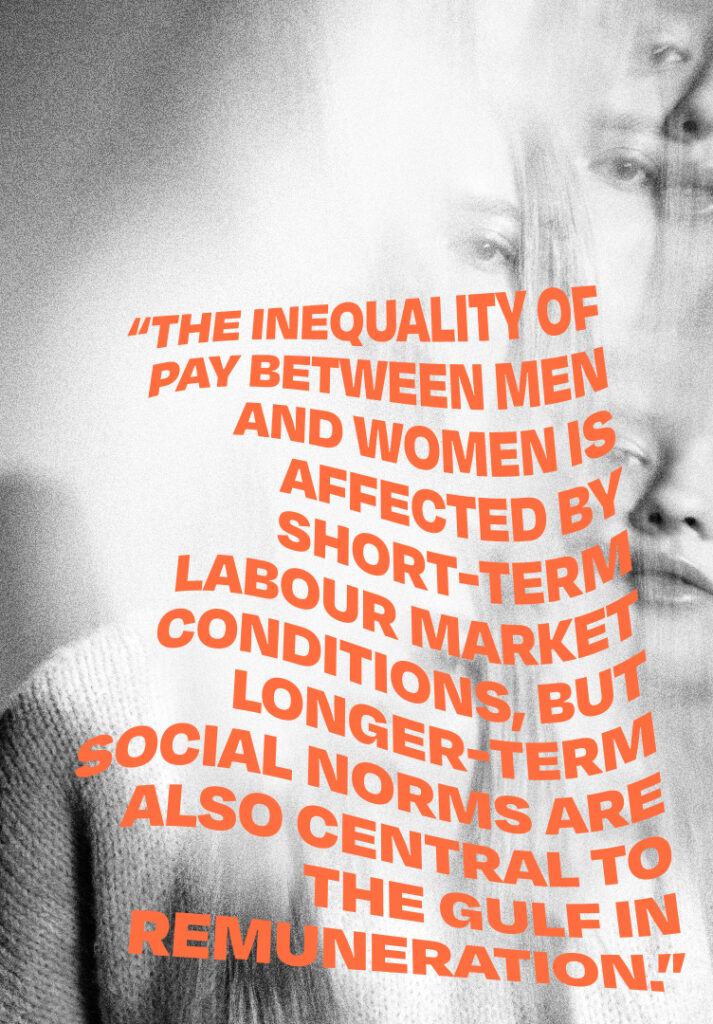Last week the World Economic Forum highlighted the fact that women in the UK take home on average £564 per month less than men due to the gender pay gap. That’s concerning at the best of times. But in the context of a cost of living crisis, it’s desperate: According to the Fawcett Society, more than two-thirds of women in the UK (68%) have struggled to pay their household bills in the last six months, rising to 80% for Black and minoritised women. How much difference would an extra £560 a month make? A lot.

Marketing is a modern, dynamic industry – but there’s little that’s twenty-first century about our industry’s gender pay gap, as the data from Marketing Week’s latest salary survey has shown. The findings reveal that on average female marketers working full-time are paid 16.5% less than their male counterparts, up from 12.6% in last year’s survey result. Yes, the figure is well below the level seen in 2021 (23%) and pre-pandemic in 2020, when it was 28%. But it’s still a number that is precisely double the gender pay gap across all full-time workers in the UK.
Evidently, there’s been a lot of movement in our industry’s figures recently. Initially tracking downwards quite steeply over three years, and now on the rise. Is that upward movement a blip? I worry the answer – at least for the next year or so – is no, if only because, as Charlotte Rogers predicted here last year and which remains true, ‘it is too soon to tell what the lasting impact of the pandemic will be on the female workforce’.
A clear gap. Murky causes.
There is, of course, no single root cause of the gender pay gap. Instead, the problem is multifaceted and highly interconnected. It’s this complex nature that means that when even just one part of the machine gets thrown out of kilter in a gendered way (for example, during the pandemic, when thanks to the closure of schools, women spent, on average, an additional 5.2 hours per week on childcare versus men’s additional 3 hours), other areas experience a knock-on effect (viz; also seen during the pandemic: a greater reduction in women’s paid working hours, relative to men.)
So what are these various but interlinked causes, and how do they play out within the marketing and communications industry?

Quotas as a path to a better place.
Firstly there are your common or garden basic discriminatory practices that, despite legislation, women continue to face in the context of hiring and promotions. For me, this is where the obvious success of quotas comes in. They may not be popular with everyone, but there’s no denying the fact that quotas act as a catalyst for change. (Equally, and as the recent fiasco with the Brits nominations showed, it’s clear that when you remove quotas, you are ignoring sex. Sexism then rears its ugly head, leaving women ultimately excluded and the clocks turned back).
Importantly though, I’m of the humble opinion that quotas only work when they’re mandatory. Take a look at the UK’s Institute of Practitioners in Advertising, one of whose tasks is to ‘monitor’ gender diversity in the industry’s senior ranks. With diversity initiatives left to agencies to self-manage, the annual proportion of women in C-suite roles has hovered around the 32 – 34% mark for some years now. Admittedly this figure is a stark improvement on the 19% seen in 2002, but it’s still stubbornly below the 40% target set by the IPA in 2017. When it comes to gender diversity in leadership, it’s clear that good intentions and lofty aspirations will only get us so far – we need a moonshot mentality.

Preconceived ideas still rule.
Then there are the stereotypes and biases with regard to gender roles and norms that can influence decisions about pay, promotions, and career paths. Viewed as less competent or less committed to their careers than men, women can find these stereotypes impact their earning potential. It may sound obvious that bias has such a significant role here, but to some, it’s not. I love, for example, how last year the UK’s Economics Observatory gallantly stated, “The inequality of pay between men and women is affected by short-term labour market conditions, but longer-term social norms are also central to the gulf in remuneration.” Er, surely those social norms around gender fundamentally shape labour market conditions?! (It’s precisely because of the insidious nature of gender stereotyping and its impact on women in the workforce that CPB created the IMAGINE campaign last International Women’s Day. If you haven’t seen it, you can check it out here.)

Women’s invisible labour.
And finally, but by no means least, there’s the impact of flexible work and how it intersects with the duality of womanhood, something I’ve written about in this column before. Research proves women’s mental load is greater than men’s, and when you add the daily battles a working woman has to have her voice heard, it’s clear why so many working women are exhausted. Greater flexibility – for men as well as women – and a commitment to reshape male-dominated workplace cultures will enable more women to progress, to earn higher salaries and thus impact the gender pay gap in positive ways. Importantly though, we need to do more to make roles flexible and inclusive from the top down. Women need to be able to see a future where they can more easily juggle leadership roles with their daily ‘to-do’ lists.
Although the short-term impact of the pandemic has been to increase the gender pay gap, in the longer term, I’m optimistic that we’ll see a Covid dividend. Mass remote working that enables ‘flexibility by default’ for many senior roles now – and signs that the advertising of roles with flexible working options leads more women to apply than men – are helping employers attract female talent. This all bodes well, but we can’t afford to take our eye off the ball.
We also absolutely must remain mindful of the knotty intersection of so many socio-economic issues that impact businesses’ ability to retain senior women – a key contributing factor to the gender pay gap. Future-focused industries, and society as a whole, surely can’t afford to lose senior women simply because they have ‘no gas left in the tank’.






Leave a Reply